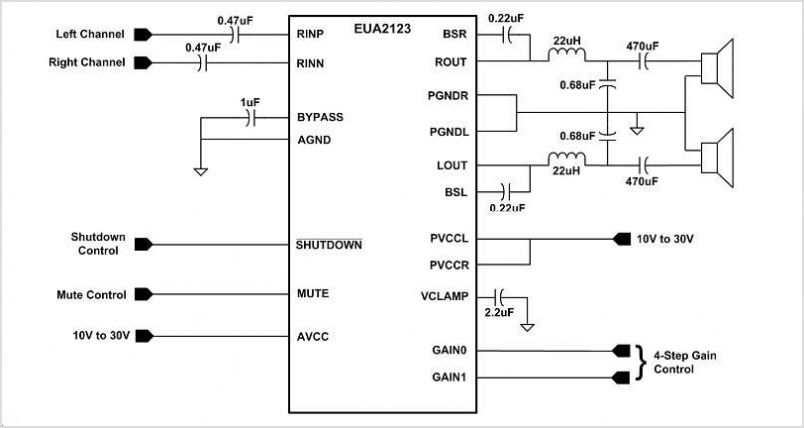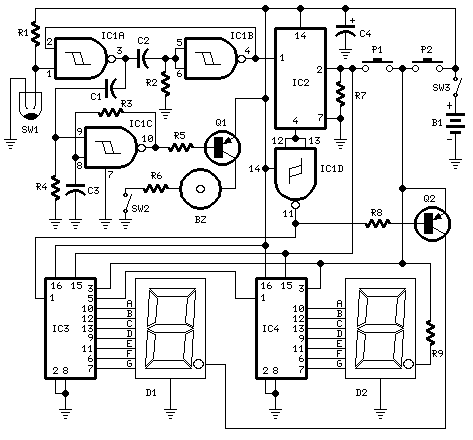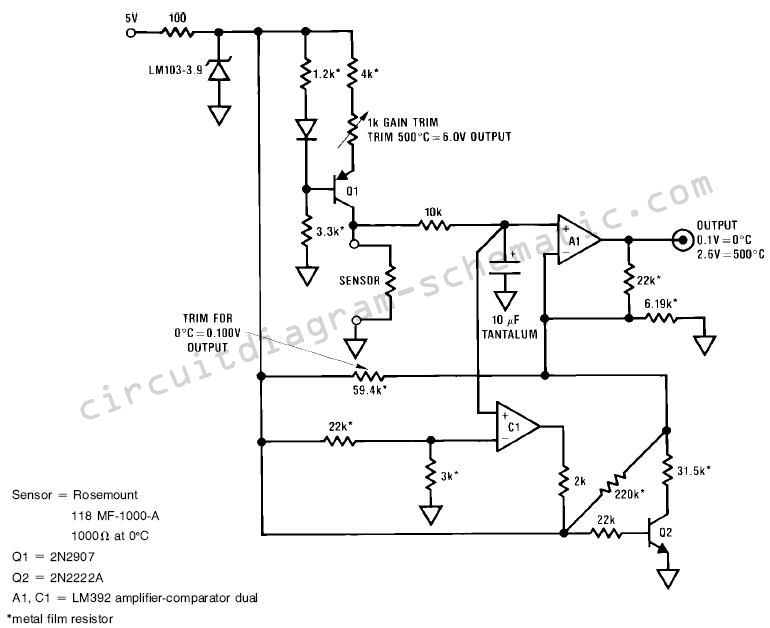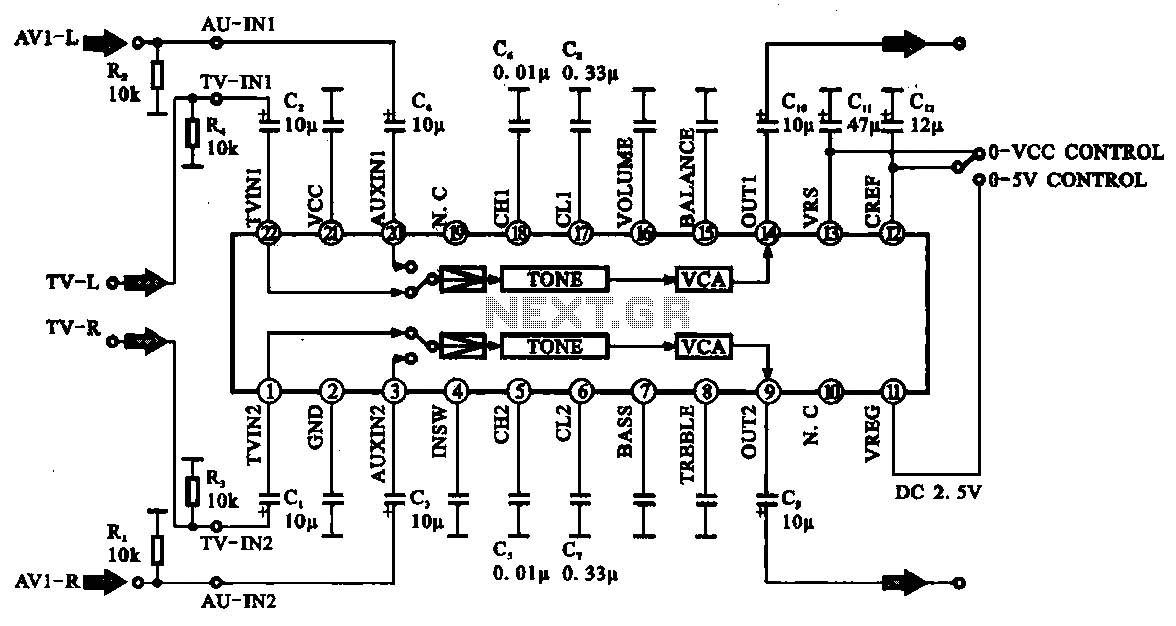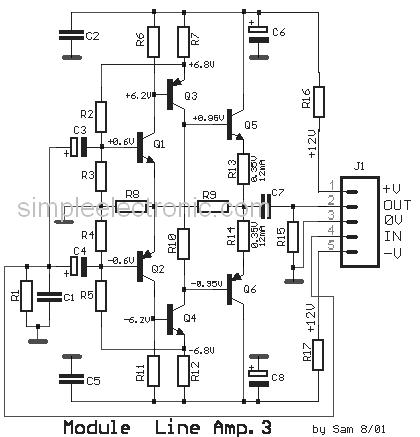
Audio Preamplifier with Digital Volume
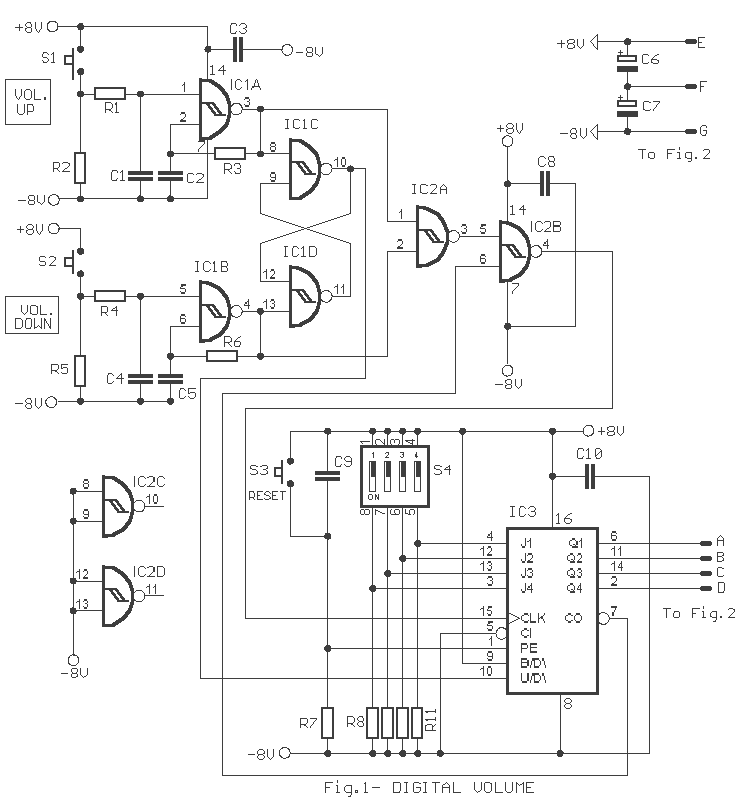
The circuit is a preamplifier with digital regulation intensity of sound. It is separated into three departments. The first schematic (Fig.1) shows the control circuit of the electronic potentiometer. The control is achieved through two pressing switches. The S1 (UP) increases the intensity of the sound while the S2 (DOWN) decreases it. Both switches control an oscillator that follows a bistable multivibrator R-S (ICIC-D), determining the direction of counter IC3. The gate IC2B ensures the counter is deactivated at the limits of the regulation region. With S4, we have the option to select the sound level, which will return after RESET or when power is supplied to the circuit. This feature is particularly useful when we select a null sound level, allowing us to quickly mute the sound with switch S3.
Additional Content: The preamplifier circuit begins with a control circuit for an electronic potentiometer, depicted in Fig.1. This control mechanism is managed by two switches: S1, which increases the sound intensity, and S2, which decreases it. These switches operate an oscillator that adheres to a bistable multivibrator R-S (ICIC-D), a component that influences the direction of counter IC3.
The IC2B gate plays an essential role in this circuit by ensuring the counter is deactivated when it reaches the boundaries of the regulation region. This function prevents any over- or under-regulation of the sound intensity, maintaining the audio output within a desirable range.
Another key feature of this preamplifier circuit is the S4 switch. This switch allows the user to select a specific sound level that the system will revert to after a RESET or when the circuit is powered. This function provides a user-friendly interface for sound control, ensuring the audio output can be easily adjusted to suit the user's preference.
The circuit also includes a null sound level selection feature, which can be activated using the S3 switch. This feature allows the user to quickly mute the sound, providing a fast and efficient method of controlling the audio output. This circuit, therefore, offers a comprehensive solution for sound intensity regulation, combining a variety of features to deliver a user-friendly, efficient, and effective preamplifier.The circuit is a preamplifier with digital regulation intensity of sound. He is separated in three departments. In first schematic (Fig.1), is found the circuit of control of electronic potesometer. The control become from two pressing switches. The S1 (UP), that put up the intensity of sound and the S2 (DOWN), on the contrary, that lower the intensity, checking them two oscillator follow a bistable multivibrator R-S (ICIC-D), with that determined the direction of counter IC3.. The gate IC2B ensure deactivate the counter in the limits of region of regulation. With the S4 we have the possibility selecting the level of sound, in which it will come back after RESET or when we give supply in the circuit.
This operation is very useful when we select null level of sound, then with switch S3 we have the possibility of going to situation MUTE, to rapid nihilism of sound. 🔗 External reference
Additional Content: The preamplifier circuit begins with a control circuit for an electronic potentiometer, depicted in Fig.1. This control mechanism is managed by two switches: S1, which increases the sound intensity, and S2, which decreases it. These switches operate an oscillator that adheres to a bistable multivibrator R-S (ICIC-D), a component that influences the direction of counter IC3.
The IC2B gate plays an essential role in this circuit by ensuring the counter is deactivated when it reaches the boundaries of the regulation region. This function prevents any over- or under-regulation of the sound intensity, maintaining the audio output within a desirable range.
Another key feature of this preamplifier circuit is the S4 switch. This switch allows the user to select a specific sound level that the system will revert to after a RESET or when the circuit is powered. This function provides a user-friendly interface for sound control, ensuring the audio output can be easily adjusted to suit the user's preference.
The circuit also includes a null sound level selection feature, which can be activated using the S3 switch. This feature allows the user to quickly mute the sound, providing a fast and efficient method of controlling the audio output. This circuit, therefore, offers a comprehensive solution for sound intensity regulation, combining a variety of features to deliver a user-friendly, efficient, and effective preamplifier.The circuit is a preamplifier with digital regulation intensity of sound. He is separated in three departments. In first schematic (Fig.1), is found the circuit of control of electronic potesometer. The control become from two pressing switches. The S1 (UP), that put up the intensity of sound and the S2 (DOWN), on the contrary, that lower the intensity, checking them two oscillator follow a bistable multivibrator R-S (ICIC-D), with that determined the direction of counter IC3.. The gate IC2B ensure deactivate the counter in the limits of region of regulation. With the S4 we have the possibility selecting the level of sound, in which it will come back after RESET or when we give supply in the circuit.
This operation is very useful when we select null level of sound, then with switch S3 we have the possibility of going to situation MUTE, to rapid nihilism of sound. 🔗 External reference
